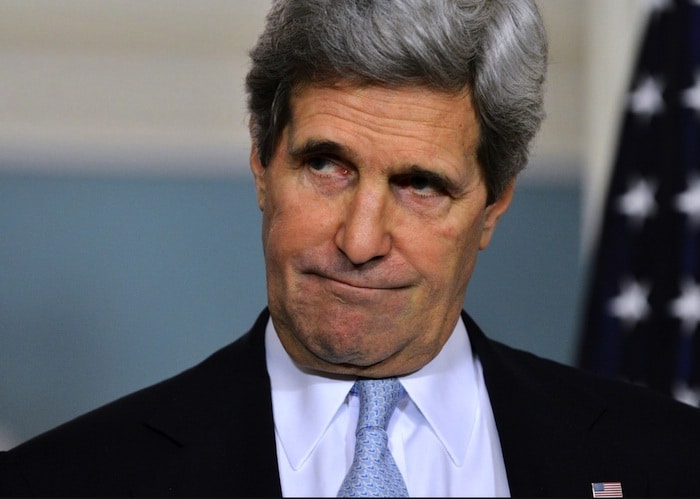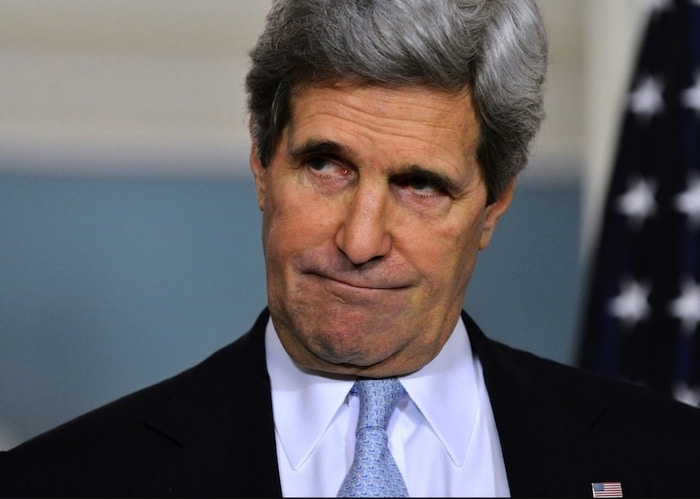
The Syria “cessation of hostilities” agreement seems all the stranger as huge unanswered questions regarding signatories, partners, monitoring, reporting, adjudication, and enforcement are raised. It seems more and more like something cobbled together without much thought as to how it might work in practice.
Indeed, the people who are paid to explain to us how it might work seem to be as confused as we are. Take State Department Spokesman Mark Toner. Asked whether the ceasefire requirements of the agreement would apply to Turkey, which has for the past week been bombing US-allied Kurds in Syria, he was unable to give a clear answer beyond the following confusing bit from Monday’s press briefing:
Well, Turkey is a member of the ISSG, the stakeholders group. Ultimately, to be a part of that, you have – you’ve committed to implementing the cessation of hostilities. So again, it – we’ve talked about this a lot – it’s not just – we certainly point a finger at Russia quite often, and other members who are, we believe, taking counterproductive actions on the ground in Syria, but it’s incumbent on all members of the ISSG to buy into a cessation of hostilities.
How’s that for clear diplomacy?
There are even more troubling facts and questions emerging.
According to the “cessation of hostilities” agreement, the ceasefire would not apply to members of ISIS, al-Qaeda affiliates, any group on the UN list of terrorist organizations, or any rebel group that does not affirm to the US or Russia that it intends to be a party to the agreement. Groups falling into the first set of categories could according to this new deal continue to be bombed by the Russians, Syrian government, and the US-led anti-ISIS coalition.
In the above mentioned State Department press briefing Monday, several members of the press corps pointed out the difficulty in determining on the ground which groups might be eligible to be bombed and which ones are to be avoided. A key issue is the rarely-until-recently-spoken fact that many of the “moderate” Syrian rebel groups in fact have formally or informally integrated themselves into the operational command structure of al-Qaeda’s Nusra Front.
Even the Washington Post reported on this problem just days ago:
One of the many problems to be overcome is a differing definition of what constitutes a terrorist group. In addition to the Islamic State and Jabhat al-Nusra, al-Qaeda’s affiliate in Syria, Russia and Syria have labeled the entire opposition as terrorists.
Jabhat al-Nusra, whose forces are intermingled with moderate rebel groups in the northwest near the Turkish border, is particularly problematic. Russia was said to have rejected a U.S. proposal to leave Jabhat al-Nusra off-limits to bombing as part of a cease-fire, at least temporarily, until the groups can be sorted out. (emphasis added)
Those two short paragraphs are worth reading again for two important revelations. One, in the course of the US negotiations with Russia over this ceasefire deal, the US reportedly argued that al-Qaeda’s Syrian franchise should be taken off the list of terrorist groups. So much for 9/11. Two, the Washington Post — prime cheerleader for the “moderate” Syrian rebels — has admitted that the “moderates” are fighting alongside al-Qaeda in Syria (presumably they are also sharing US-provided weapons and training).
The question then is, if you train with, share weapons with, and fight alongside al-Qaeda at what point do you become an al-Qaeda fighter? There are many people rotting away in Guantanamo who have done far less, yet are “indefinitely detained.”
Though we often accuse the Washington Post, along with the rest of the mainstream media, of being the US government’s mouthpiece, turning to the actual US government’s official mouthpiece, the State Department spokesman Mark Toner, we get confirmation of what the Post reported. From Monday’s State Department daily press briefing:
QUESTION: Is there not – I mean, my understanding is that at least some of these groups are commingled. You assert that you feel that you are able to delineate the territories that are inhabited by ISIL or by Nusrah or by the other groups deemed terrorist. What makes you so confident you can do that? Do you not believe that there is at least some commingling of these groups? Or intermingling?
MR TONER: I would respectfully defer to others with a better knowledge of conditions on the ground. But yes, I believe there is some commingling of these groups. I think that’s a reality; we’ve talked about it before. All that needs to be addressed in some kind of coherent fashion that’s amenable to all the members of the ISSG in a way that – again, as long as you get an actual cessation of hostilities, then you can address some of these other aspects. (emphasis added)
So the State Department officially recognizes that its “moderate” rebels are fighting alongside — commingling with — al-Qaeda in Syria.
At what point does this whole US regime change operation in Syria become just a theater of the absurd, drenched in blood?
Oh, and Secretary of State John Kerry has said that if this incredibly convoluted, ill-defined “cessation of hostilities” plan does not produce peace, Washington is going to get out a very large marking pen and slice Syria into several new statelets of its own design. How’s that for “American exceptionalism”?


